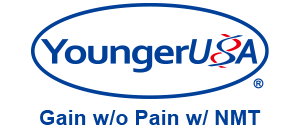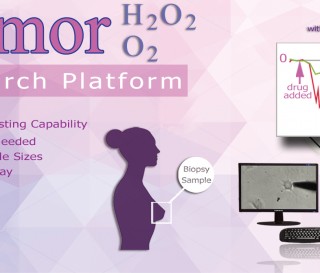Research on the immune system for cancer treatments is always growing, as evidenced by a new study in Nature, in which an inhibitor treatment increased anti-tumor immunity. This area of research could be furthered by investigation of H2O2 flux in the anti-tumor immune response.
The Paper
This week, Nature published "CDK4/6 inhibition triggers anti-tumour immunity" by Shom Goel & Molly J. DeCristo, of the Dana-Farber Cancer Institute and Brigham and Women's Hospital. They investigated cyclin-dependent kinases 4 and 6 (CDK4/6) in breast cancer and tested their effect on cell growth and immune responses.
These scientists used CDK4/6 inhibitors in tests of cell lines, animal models, and human patients (from a clinical trial), and discovered that inhibiting CDK4/6 expression enhanced immune response to tumors by two mechanisms. One; it increased the ability of tumors to present antigens, making them easier to target. Two; it restricted growth of T (reg) cell population, which are immunosuppressive.
This study is very promising for the study of immunotherapy for breast cancer treatment, but there is still more to discover about this mechanism.
NMT Connection
The role of H2O2 in immunity has been widely studied in plants, such as in "The microbe-secreted isopeptide poly-γ-glutamic acid…" (Scientific Reports, 2017). But its role in the human immune system has not been fully explored. To our knowledge, few have used NMT to measure H2O2 flux in animal cells.
H2O2 plays an important role in the immune system in many ways. It has been found at sites of inflammation and injury, and has been theorized to cause immune responses (Nat Immunol. 2002). Though this role in the immune system has been known for a long time, there is still much that could be learned from measuring the flux of H2O2, which has not been explored in depth in cancer cells.
Could H2O2 flux be used as an indicator of the effect of CDK4/6 inhibitors? Could it be used as a messenger to tell us about the correlation between CDK4/6 and the immune system? Furthermore, maybe researchers can also use NMT to measure the flux of O2 and make the link between metabolism and the immune system.
For more NMT connections, see NMT Publications: http://youngerusa.com/index.php/publications
References:
Goel S, DeCristo MJ. CDK4/6 inhibition triggers anti-tumour immunity. Nature, 2017. 548(7668):471-475
Peng Lei, Xiao Pang et al. The microbe-secreted isopeptide poly-γ-glutamic acid induces stress tolerance in Brassica napus L. seedlings by activating crosstalk between H2O2 and Ca2+. Scientific Reports, 2017. 7, Article number: 41618
Reth M. Hydrogen peroxide as second messenger in lymphocyte activation. Nat Immunol. 2002. 3(12):1129–34
In this series of posts, you will learn something new that you cannot get anywhere else. Here you will find out how the latest research from Cell, Nature, and Science journals could go even further with the addition of new technology. We will show you how NMT can change the way that research is done, and how it can give a new perspective to studying the life sciences.
Thank you for reading!
Check Out More Applications NMT's most popular field is currently plant physiology, but creative scientists are applying it to new fields every day, like diabetes and cancer research. Now, labs using NMT systems have published over 700 papers in top journals! Our clients' top feedback is that the their high-quality results help them get published, thanks to the non-invasive nature of our technology, which allows them to measure live, physiologically accurate samples.
Experience the NMT Physiolyzer® Our most advanced NMT system yet: This highly advanced instrument is allowing scientists to discover physiological functions of live samples in innovative new ways. With customizable software, you can choose from 12 ions and molecules for your own personalized system.
The Theory of NMT Check out the principles of how NMT works.


